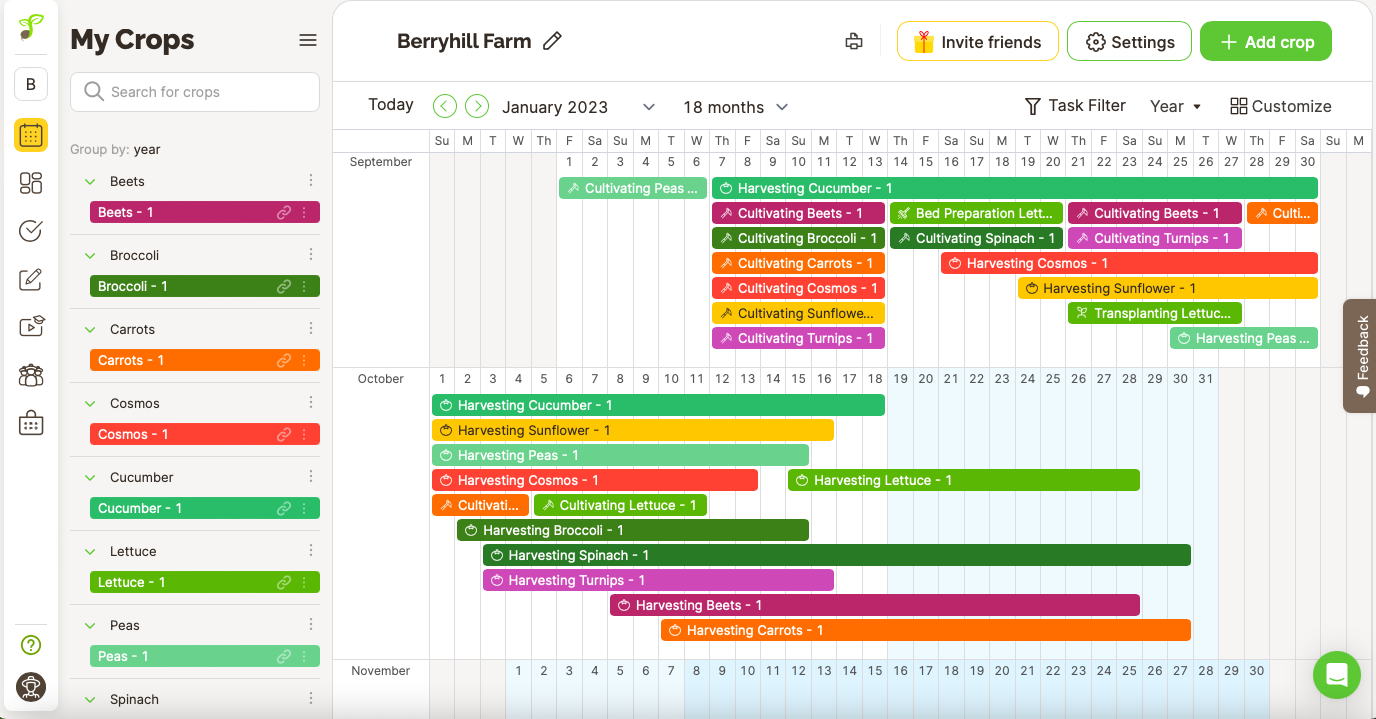Finally, the thyme has come! 🌱
It’s time to plan our 2024 garden! My favorite time of the year is sitting by the wood stove with my seed catalogs, garden plans, and homesteading books. I love dreaming about my upcoming garden thinking about what I want to do different, or add, or no longer grow again, etc.
But! Before you jump into your seed catalogs and get yourself overwhelmed, make sure you check out my recent blog post about my best 3 tips to consider before you start crop planning. It’s helpful!
This year, we are buying the bulk of our seeds from Berlin Seed. They are local in Ohio and I love that they only carry Non-GMO seed. They also have tons of supplies for gardening, and I think this year I am going to grab a soil blocking tool to give that a shot. You have to download their pdf catalog on their site and call in your order. They’re Amish and don’t have online ordering.
The rest of our seeds will come from Johnny’s Selected Seed.
Ok, now let’s get into the list. These are crops that we are growing this year because we love them, we crave them in winter, and we are sure to preserve them. Or, we want them for medicinal use.
Let’s start with the cold weather crops!
Spinach: Hammerhead, Bloomsdale
Lettuce: Green Ice, Tango, Buttercrunch
Romaine: Paris Island
Arugula
Broccoli: Waltham
Cabbage: Stonehead
Radish: Watermelon, Cherry Belle
Beets: Red Ace
Carrots: Danvers 126, Royal Chantenay
Peas: Super Sugar Snap
Next, let’s move onto the warmer weather crops.
Tomatoes: Amish Paste (roma tomato for canning)
Brandywine Slicing, Buffalo Sun, Celebrity Plus
Cherry Tomatoes: Sungold, Indigo
Bell Peppers: California Wonder, Jimmy Nardello, Lunchbox Snacking peppers
Green Beans: Blue Lake, Dark Horse
Beans: Calypso (new to us this year! will be a dried bean for preserving)
Sweet Corn: Peaches & Cream, Silver Queen
Popcorn: Lady Finger (new to us this year!)
Cucumber: Diva, Homemade Pickle
Cantaloupe: Hearts of Gold, Sugar Cube
Watermelon: Sangria, Sugar Baby
Onions: Patterson, Red Wing,
Zucchini: Sunburst, Gold Rush
Butternut Squash: Waltham, Honeynut
Acorn Squash
Herbs. These will be grown for many reasons. Of course for culinary use, we will dry them and store for winter too, but also for medicinal use and attracting pollinators and insects that will keep pests away.
Basil: Sweet Large Leaf, Holy Basil
German Chamomile
Cilantro (I don’t eat this, it will be for space filler and pollinators)
Dill: Bouquet, Fern Leaf
Plain Italian Parsley
Garlic & Onion Chives
Echinacea
Calendula
Comfrey
English Lavender
Greek Oregano
Sage
Thyme (regular and magic carpet)
Rosemary
And there we have it! That is my plan for our summer garden this year. There are several plants that I will grow successions of so that we have continuous harvest, and some plants that I will (do my best to) extend into the fall and winter. I’m working hard to convince my other half to build me some cold frames close to the house so I can have a small kitchen garden all year. We’ll see what happens ;)
I’d love to know what you’re growing this year or if you’re trying anything new! Tell us below!
You should also check out my Crop Planning 101 ebook that I created last year to help you figure out what to grow, how to store crops, and so much more info to help you plan your garden year.












